Mountain Laurel - Kalmia latifolia
One of North America’s finest native shrubs, Mountain Laurel shows surprising reliability here on Lincoln Hill. Native across a broad range of the Eastern US - from N. Florida to Maine - many visitors to our garden find it hard to believe they are seeing thriving, mature specimens of this beloved native plant here in northern Vermont. Turns out, Vermont actually supports native populations in the south east corner of our state. One story even alleges that the Swedish naturalist, Peter Kalm, who the genus Kalmia is named after, sent specimens collected in Vermont in the mid 1700’s to his teacher and fellow Swede, Carl Linneaus (the “father of modern taxonomy”) from which the plant was first described.
While many sources indicate that Mountain Laurel is hardy only to zone 5 (-10 to -20F), plants here have bloomed consistently even after winter lows of -25 to -30F., a situation that will kill the vast majority of Rhododendron buds. Although clearly adaptable through zone 4 (-20 to -30F.), one must pay attention to the particular cultural needs in order for it to thrive. Well drained, acidic soils (pH4.5 -5.5) are critical, as is sighting in locations out of direct winter sun and sweeping winds. Patience is also mandatory, as Kalmia can be slow to become established, and it unfortunately seems to be a popular winter menu item for the local deer, suggesting some type of winter fencing would be a wise idea.
There are about 200 named cultivars of Kalmia latifolia in the gardening world, and a good resource to see many of them is the European Kalmia Society Lincoln Hill Botanical Garden currently has about 15 varieties in our collection and the best time to see them in bloom is the middle to latter part of June, a week or two after the large-leaf Rhododendron show has past.
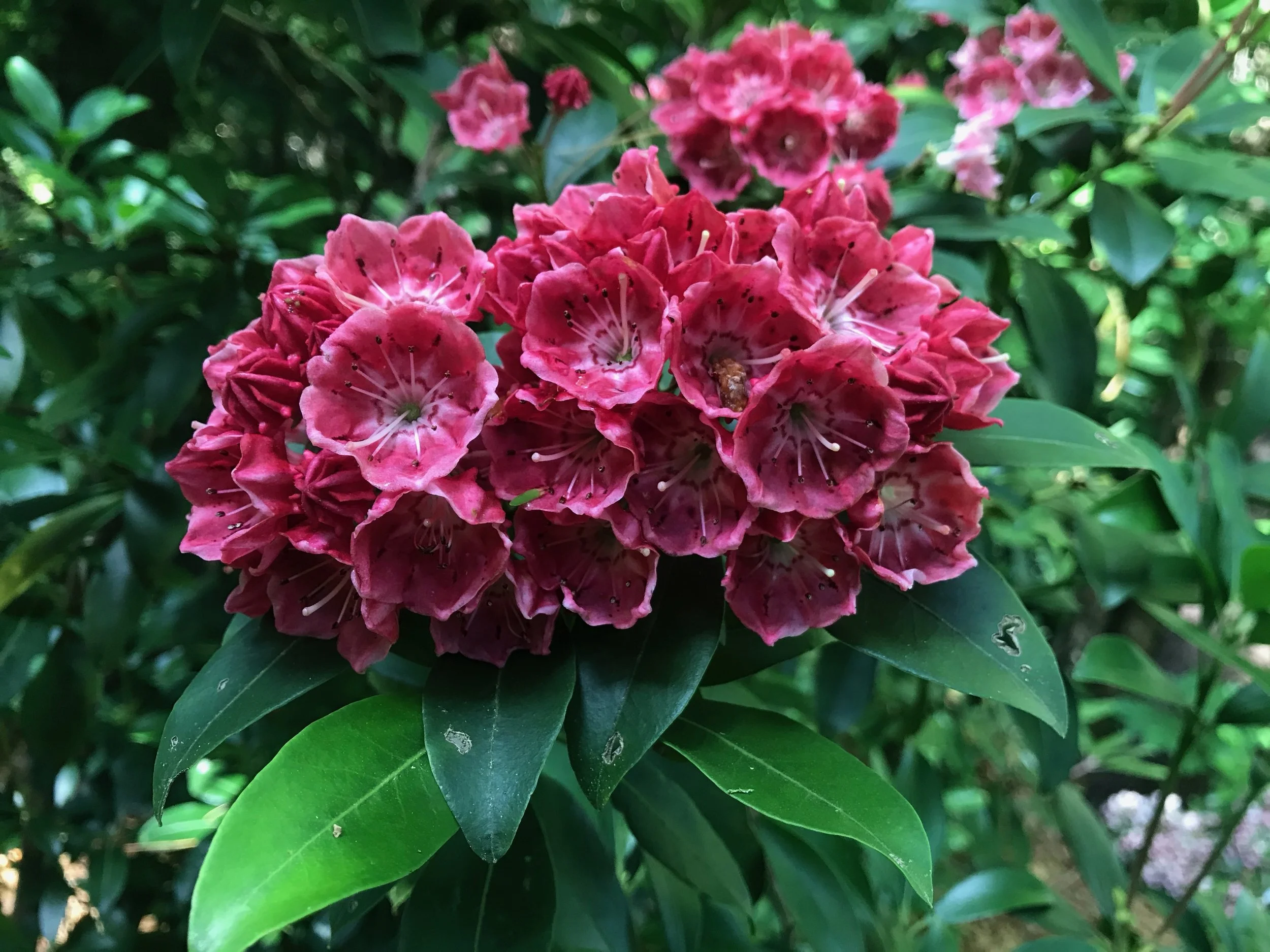
Kalmia latifolia 'Raspberry Glow'
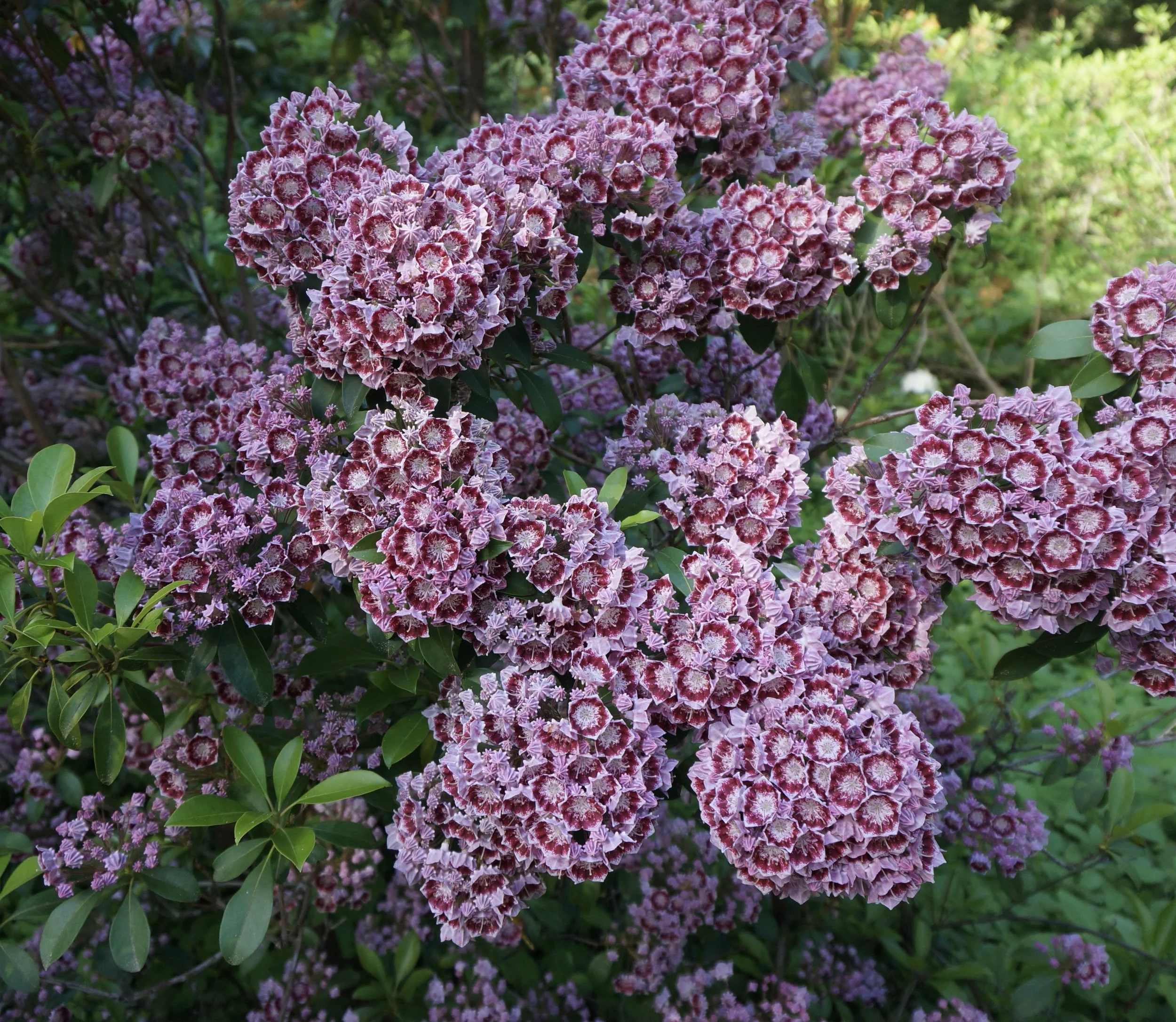
Kalmia latifolia 'Carorsel' - nice dark banded flower form.
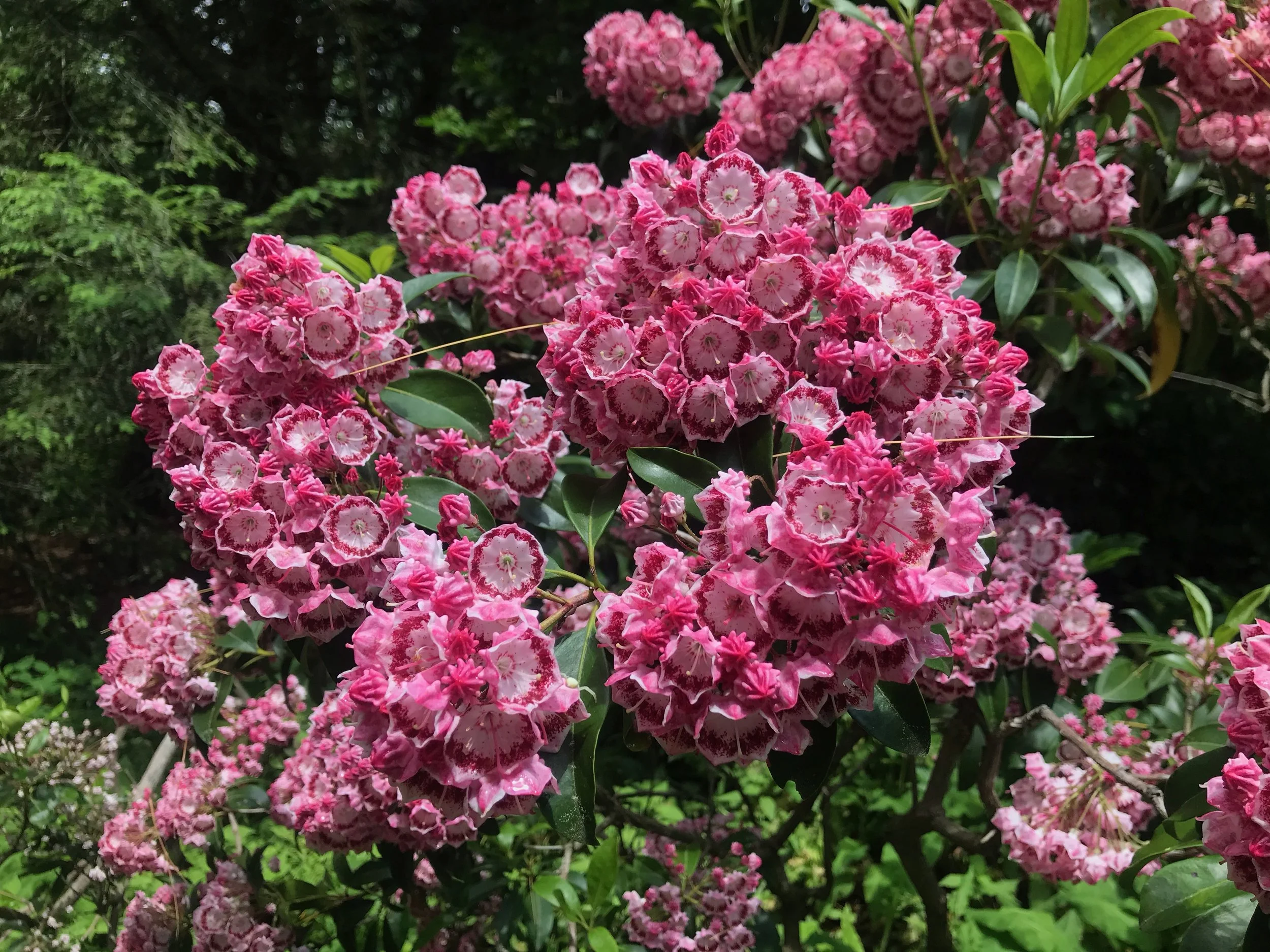
Kalmia latifolia 'Carosel' - close up and at an earlier flowering stage

Kalmia latifolia 'Galaxy'
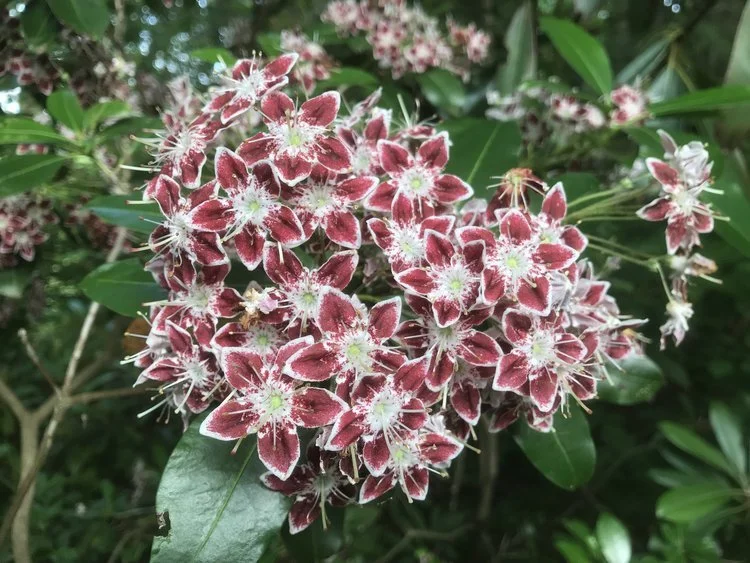
Kalmia 'Galaxy' - close up of flower
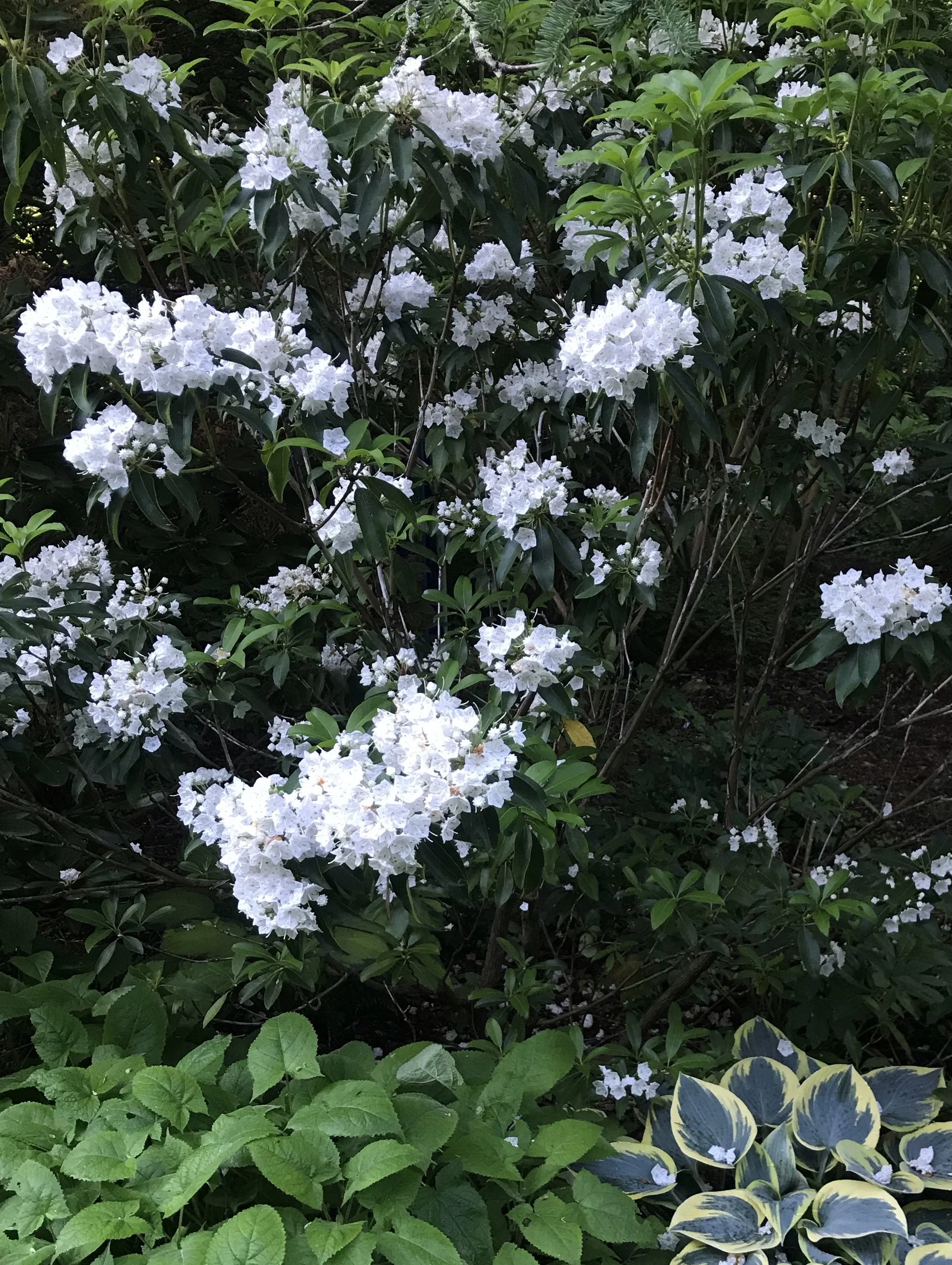
Kalmia latifolia 'Snow Drift'
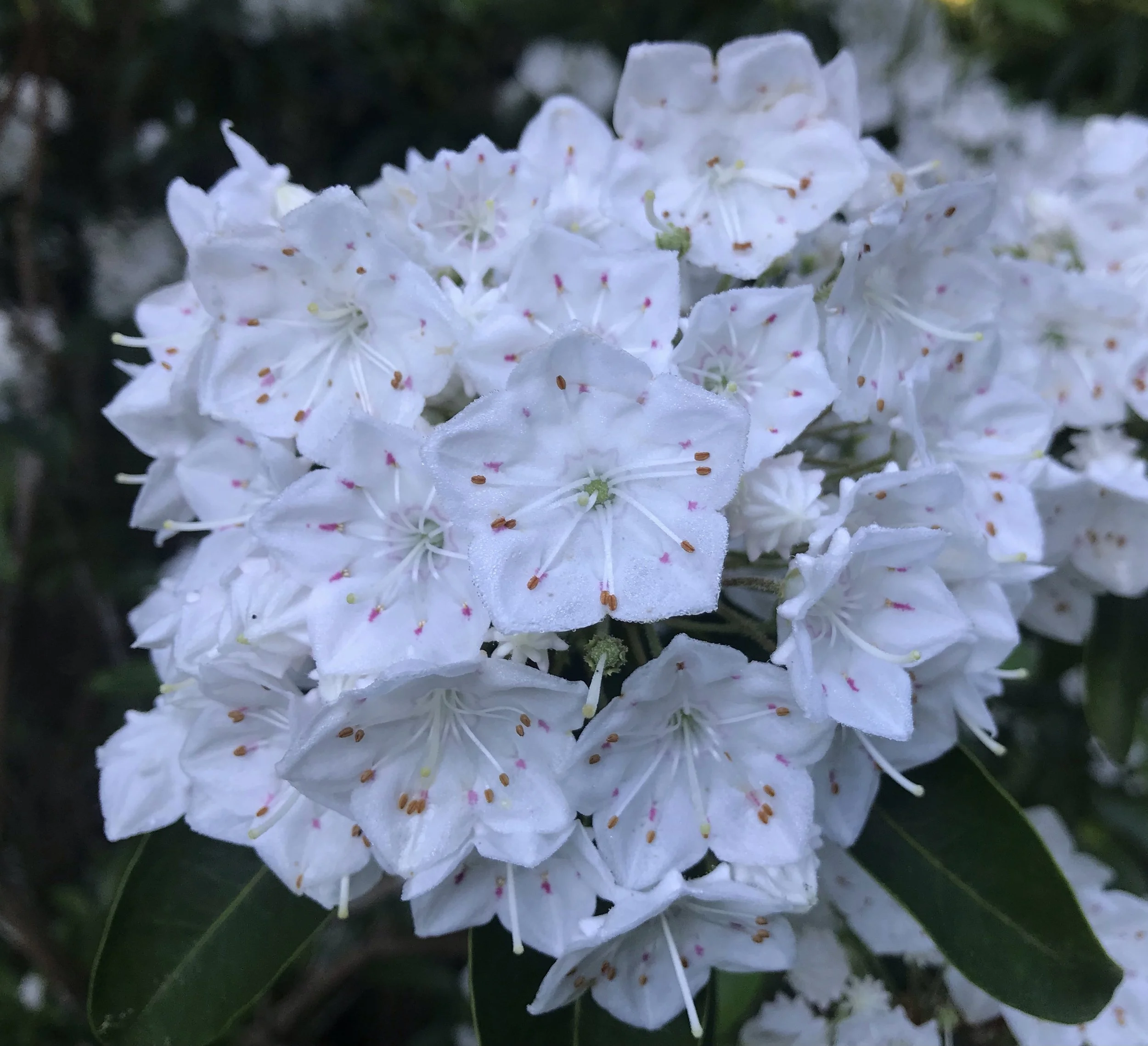
Kalmia latifolia 'Snow Drift'

Kalmia 'Stoplight' - The buds on this unique Mountain laurel never open, remaining showy for up to a month. Photo taken July 23rd.
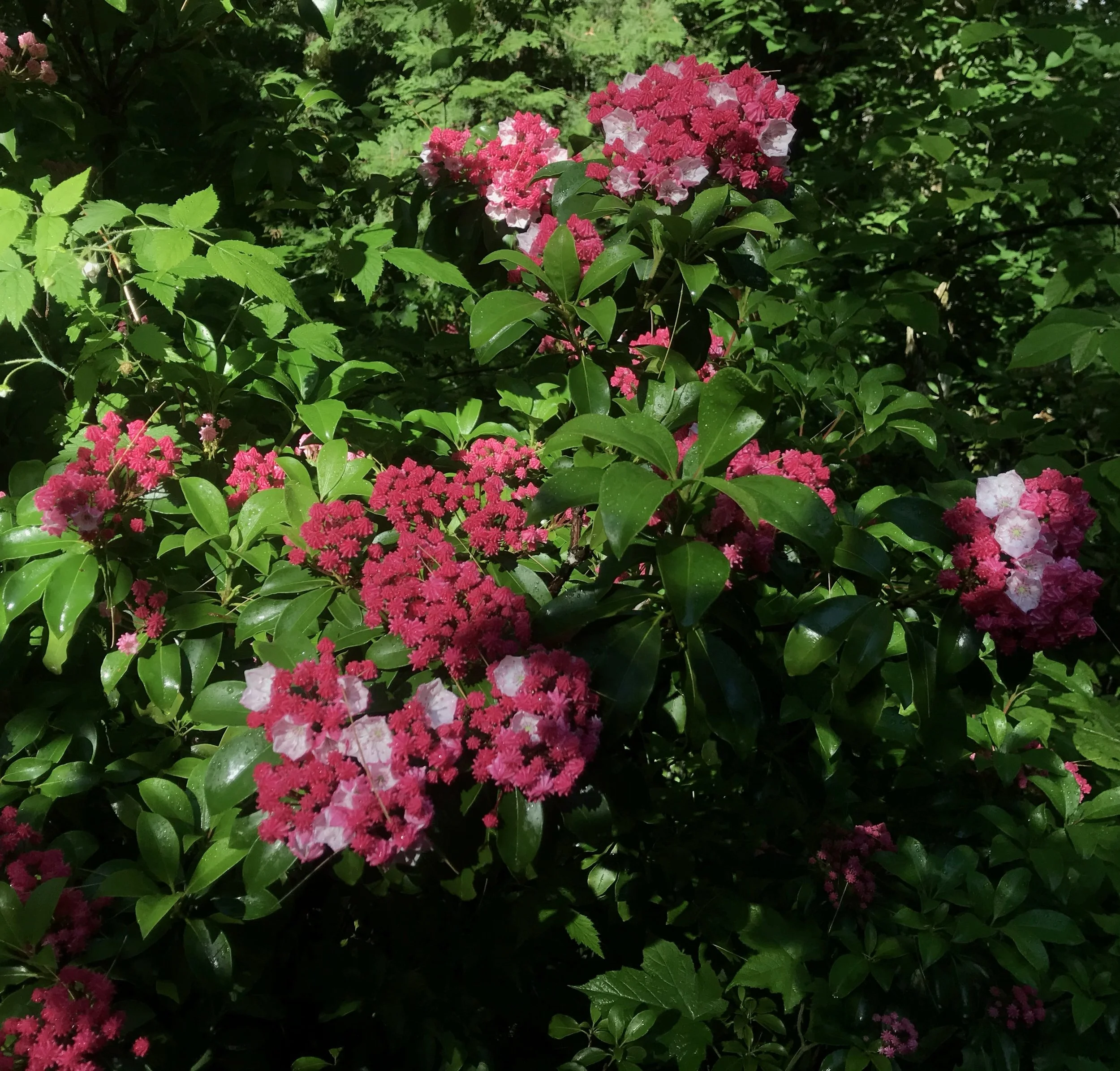
Kalmia latifolia 'Carol'
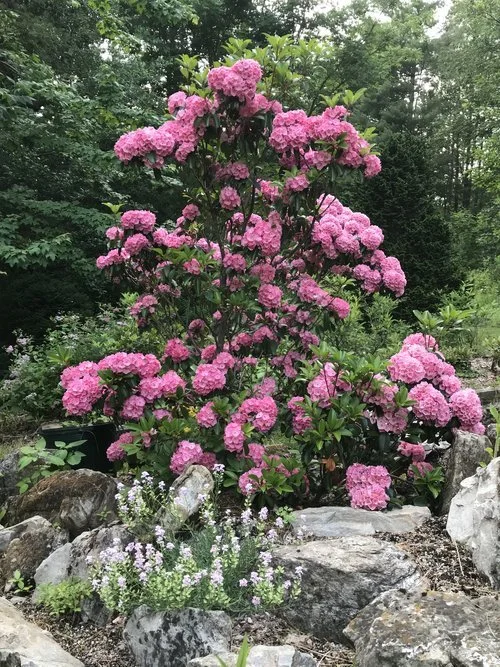
Kalmia latifolia 'Sarah'
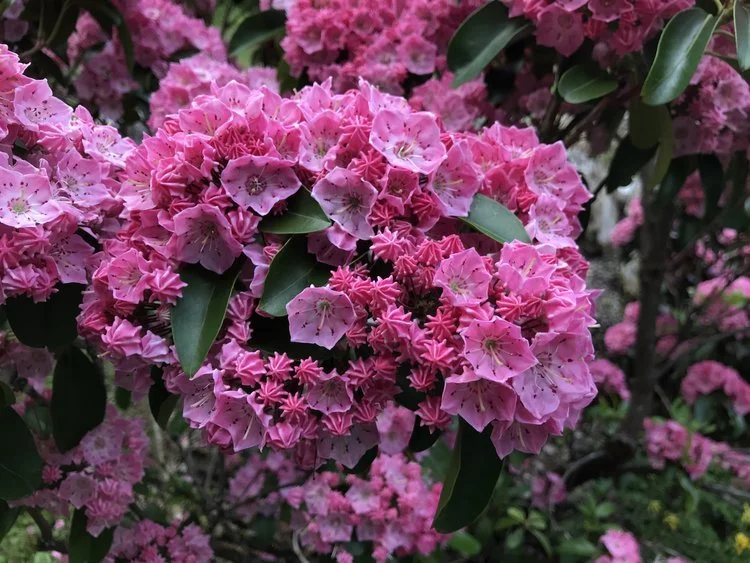
Kalmia latifolia 'Sarah' - close up of flowers
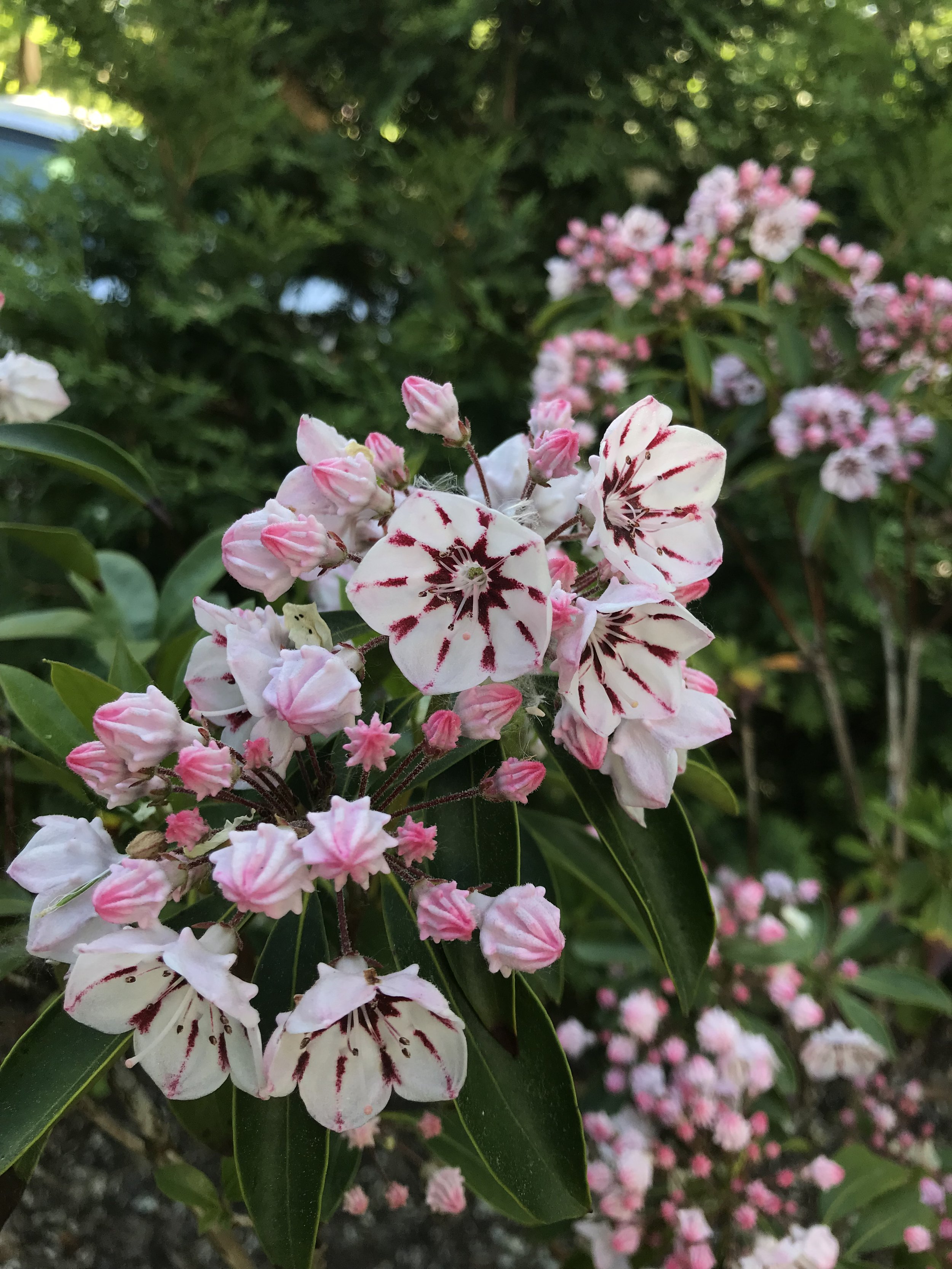
Kalmia latifolia 'Peppermint' - a striking form with excellent glossy green foliage.
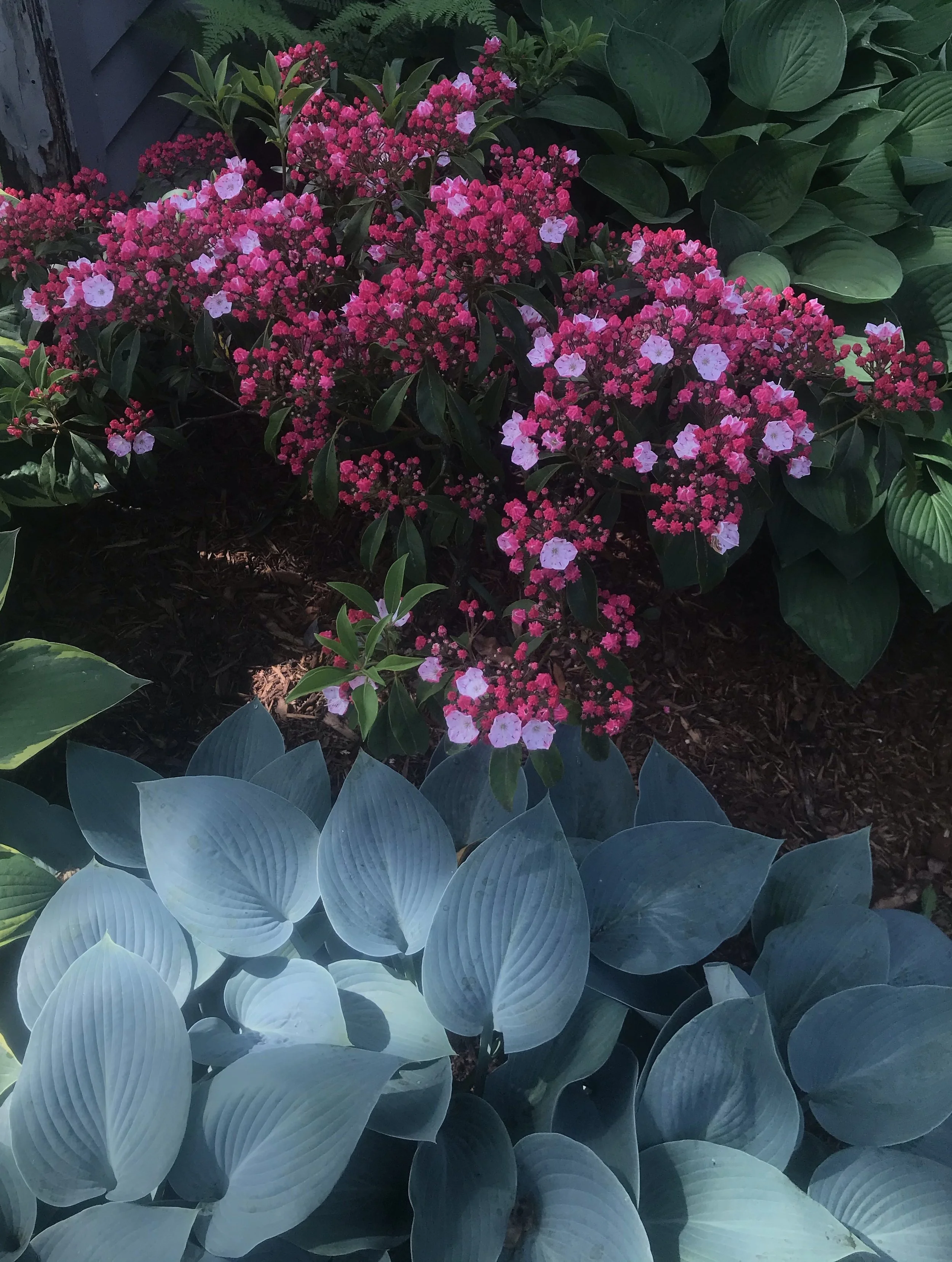
Kalmia latifolia - a dwarf cultivar with Hosta
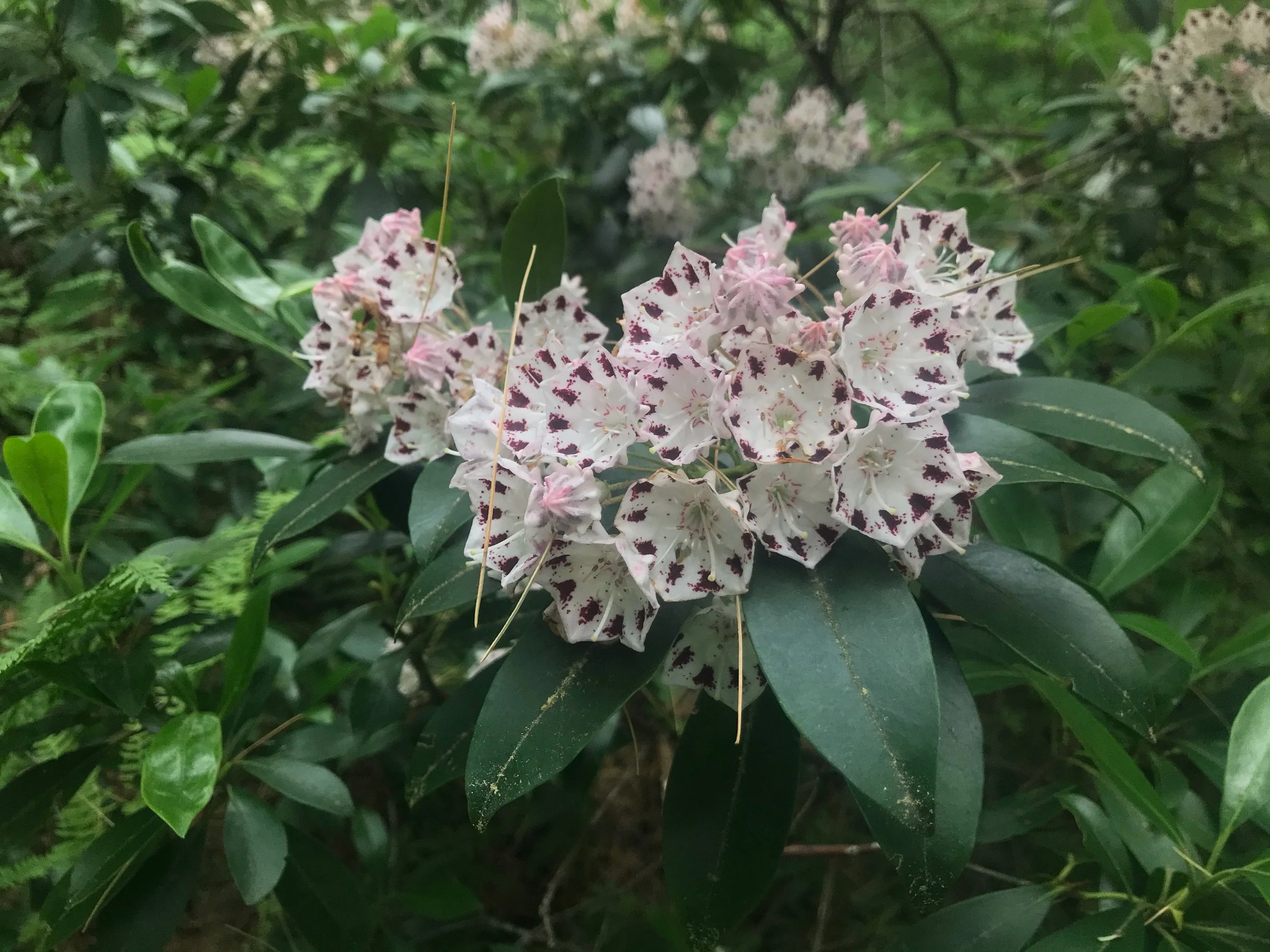
Kalmia latifolia a bandad form in the fuscata group
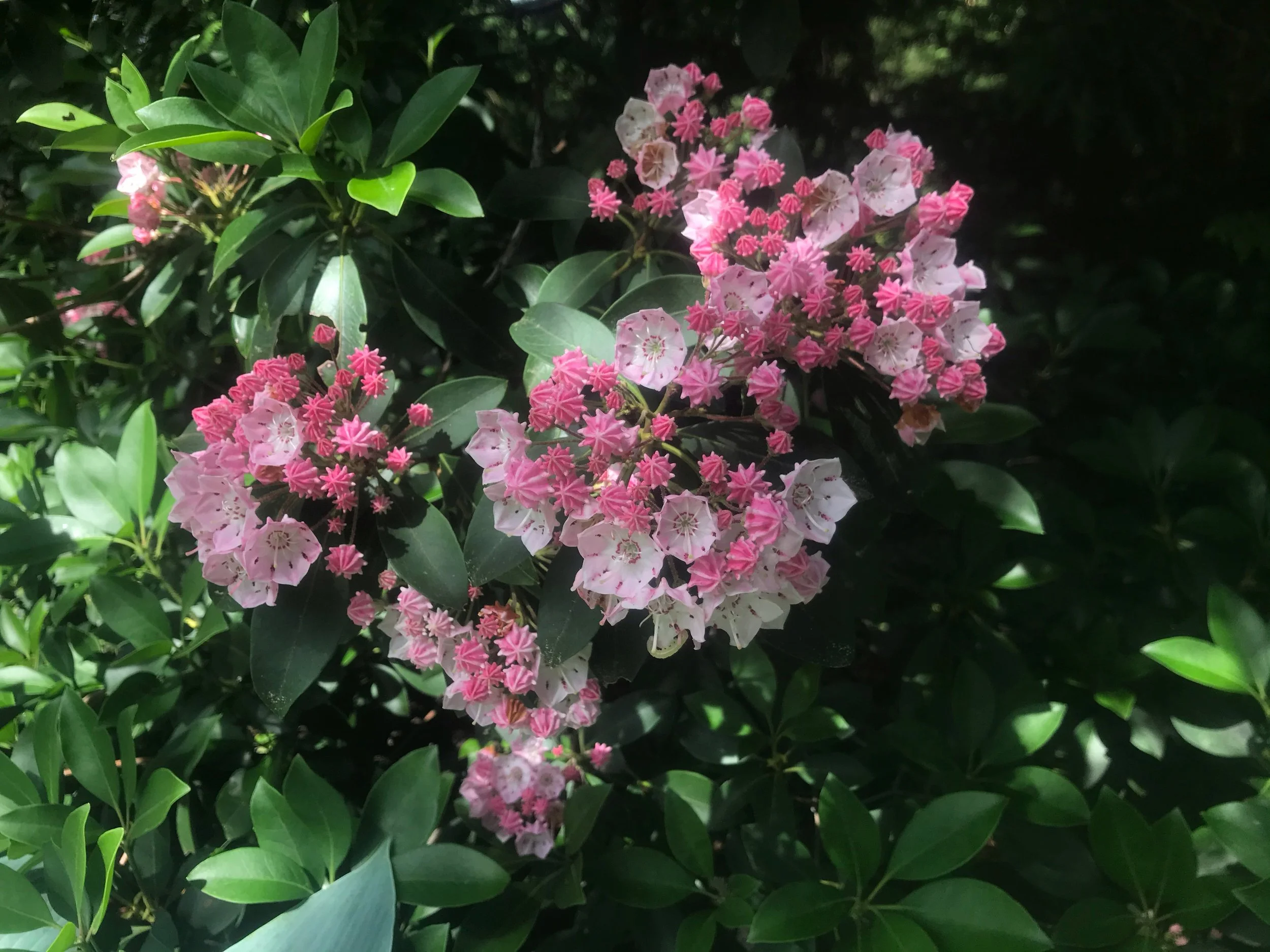
Kalmia latifolia - the "typical" wild form
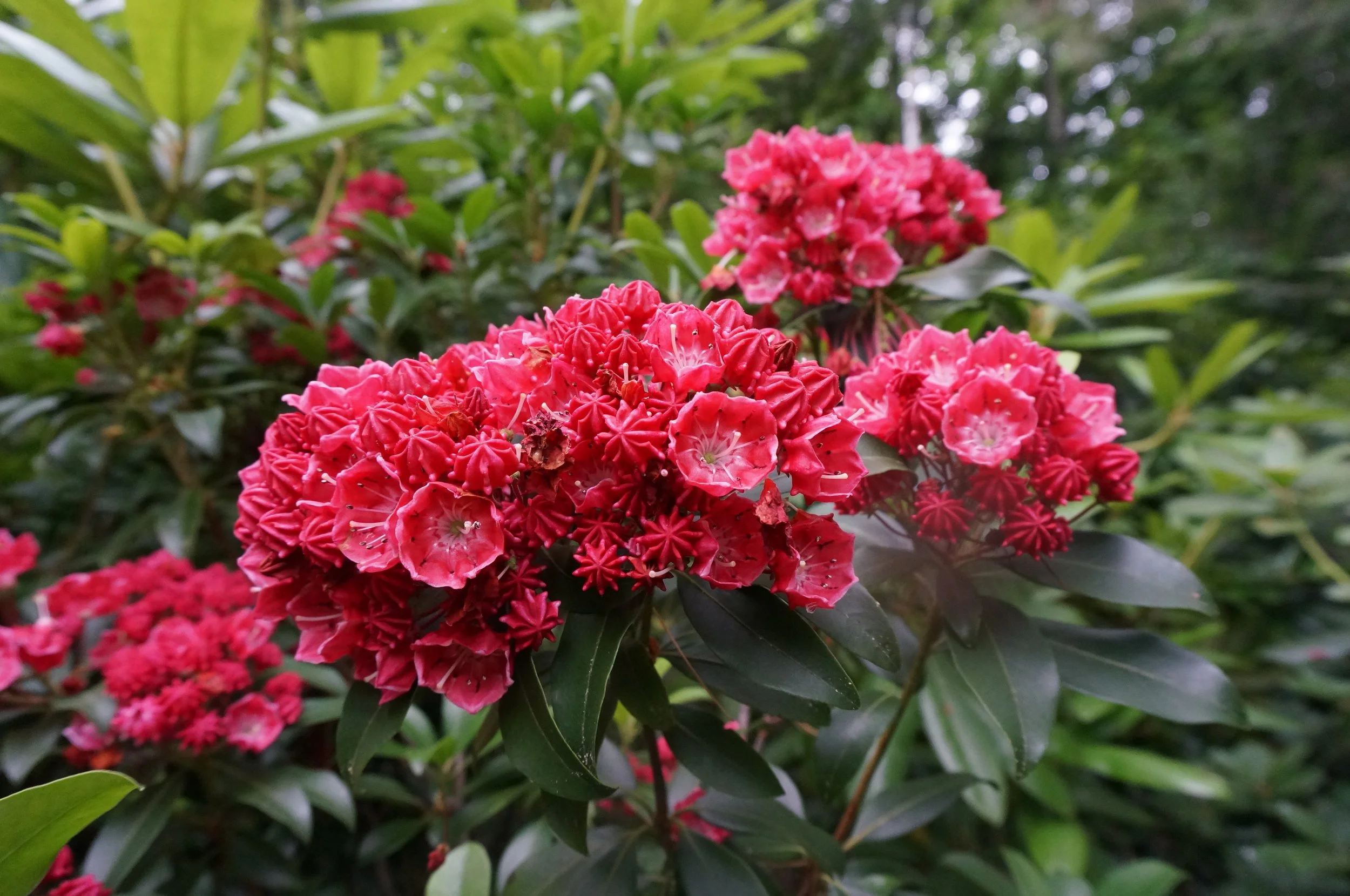
Kalmia latifolia 'Ostbo Red'
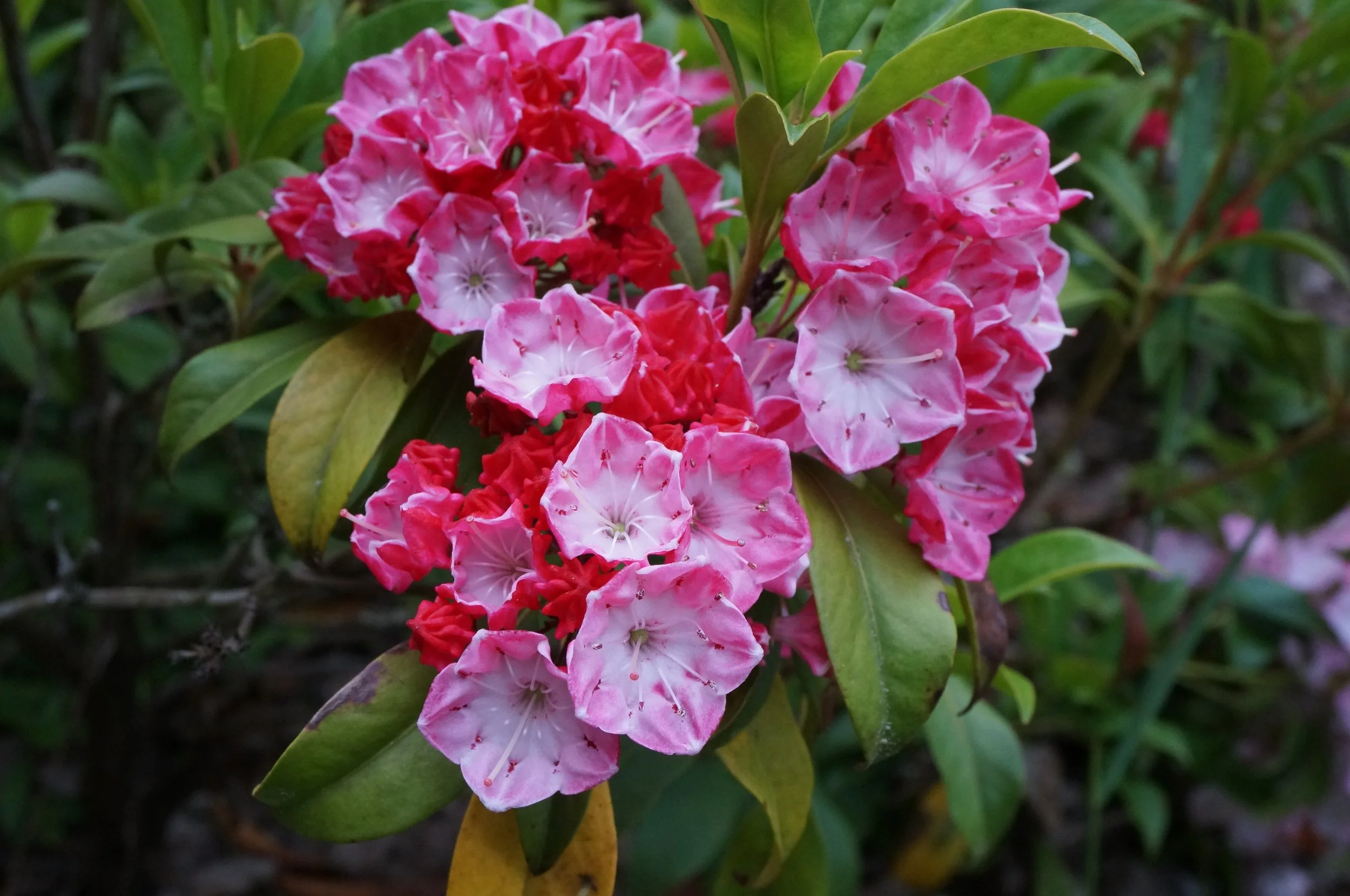
Kalmia latifolia 'Olympic Fire'
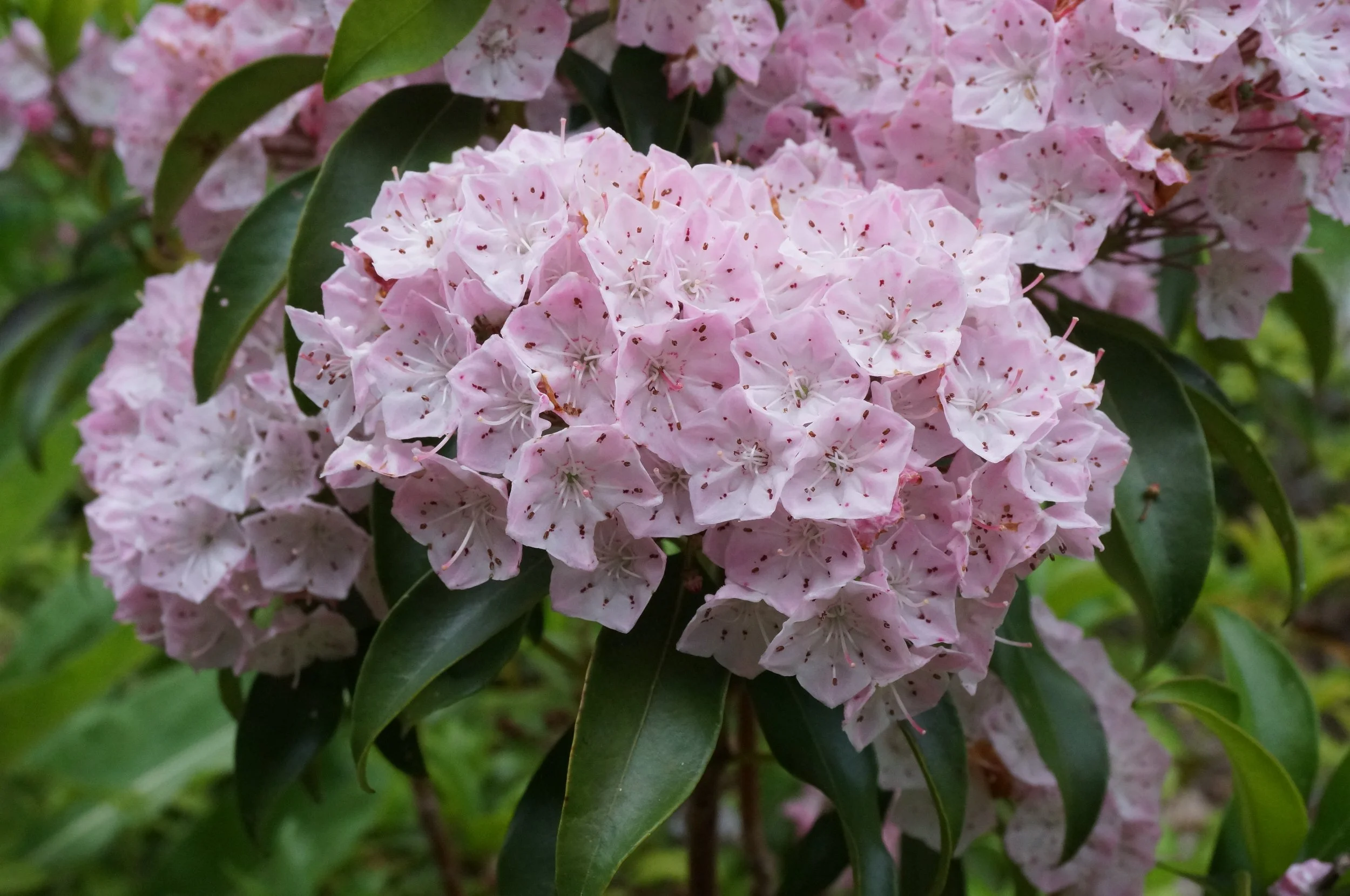
Kalmia latifolia 'Quinipiac'
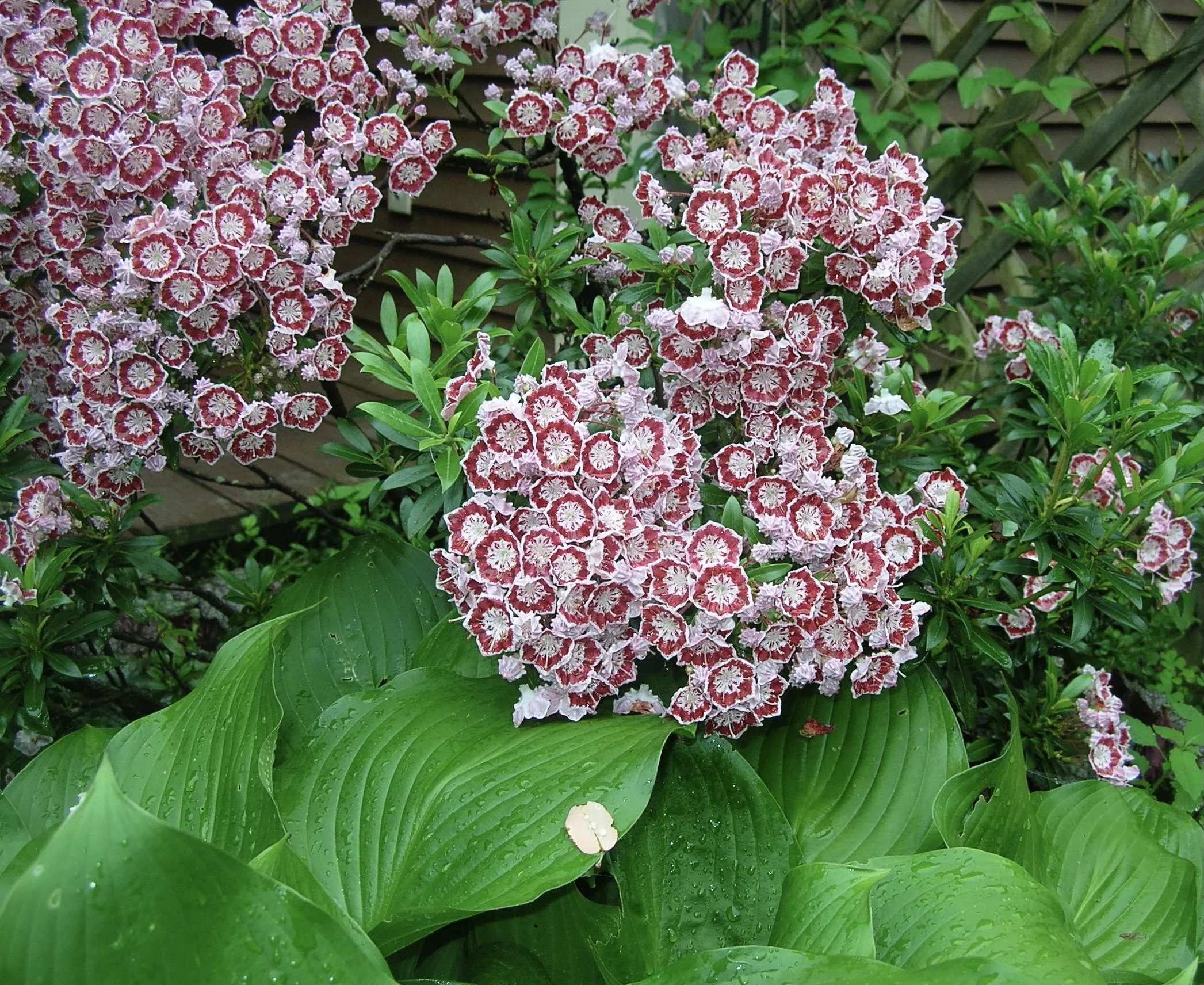
Kalmia latifolia 'Minuet' - a dwarf form of Mt. Laurel. A 15 year old plant will be under 3' in height.
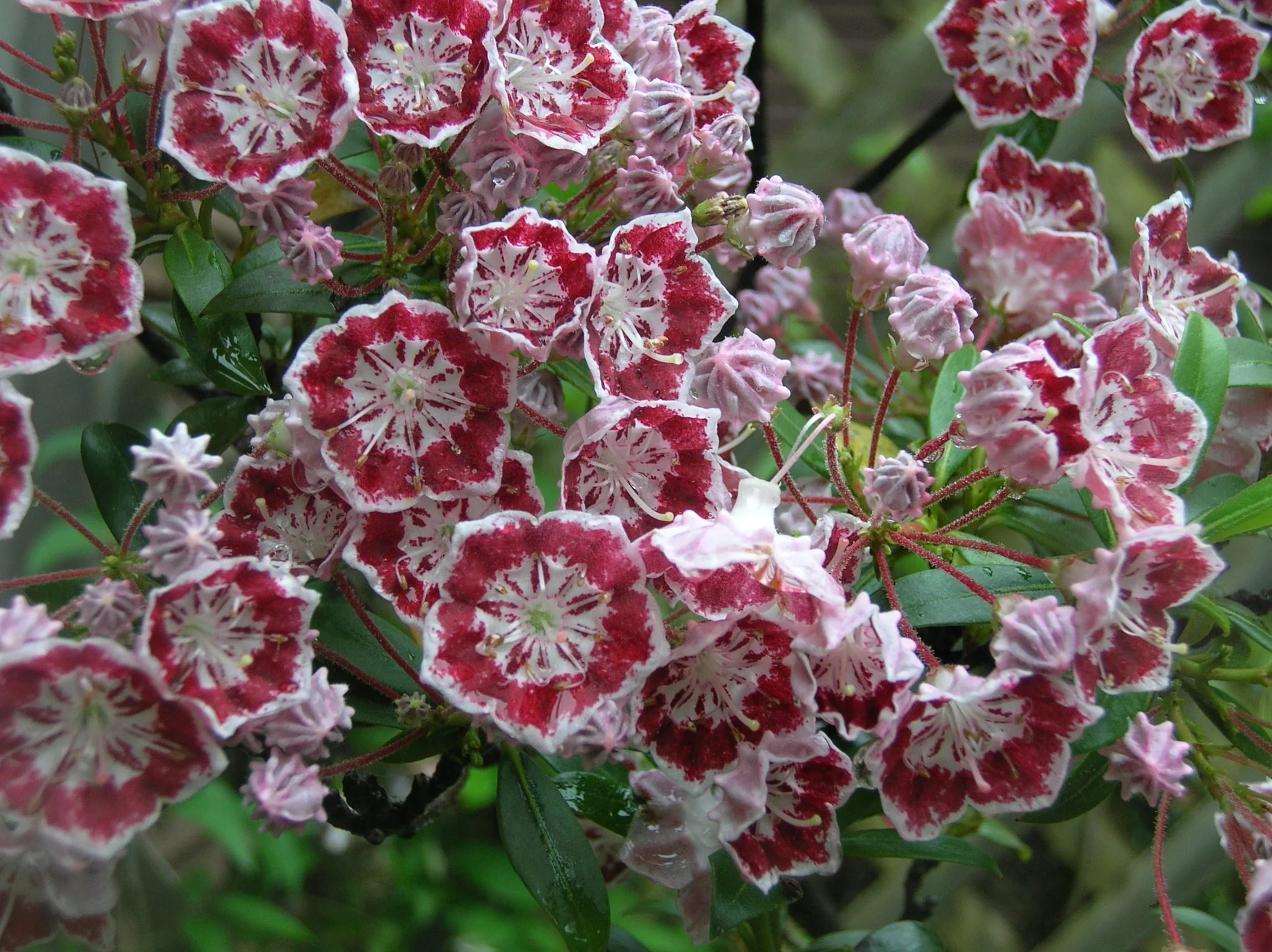
Kalmia 'latifolia 'Minuet' - close up of the banded flowers.
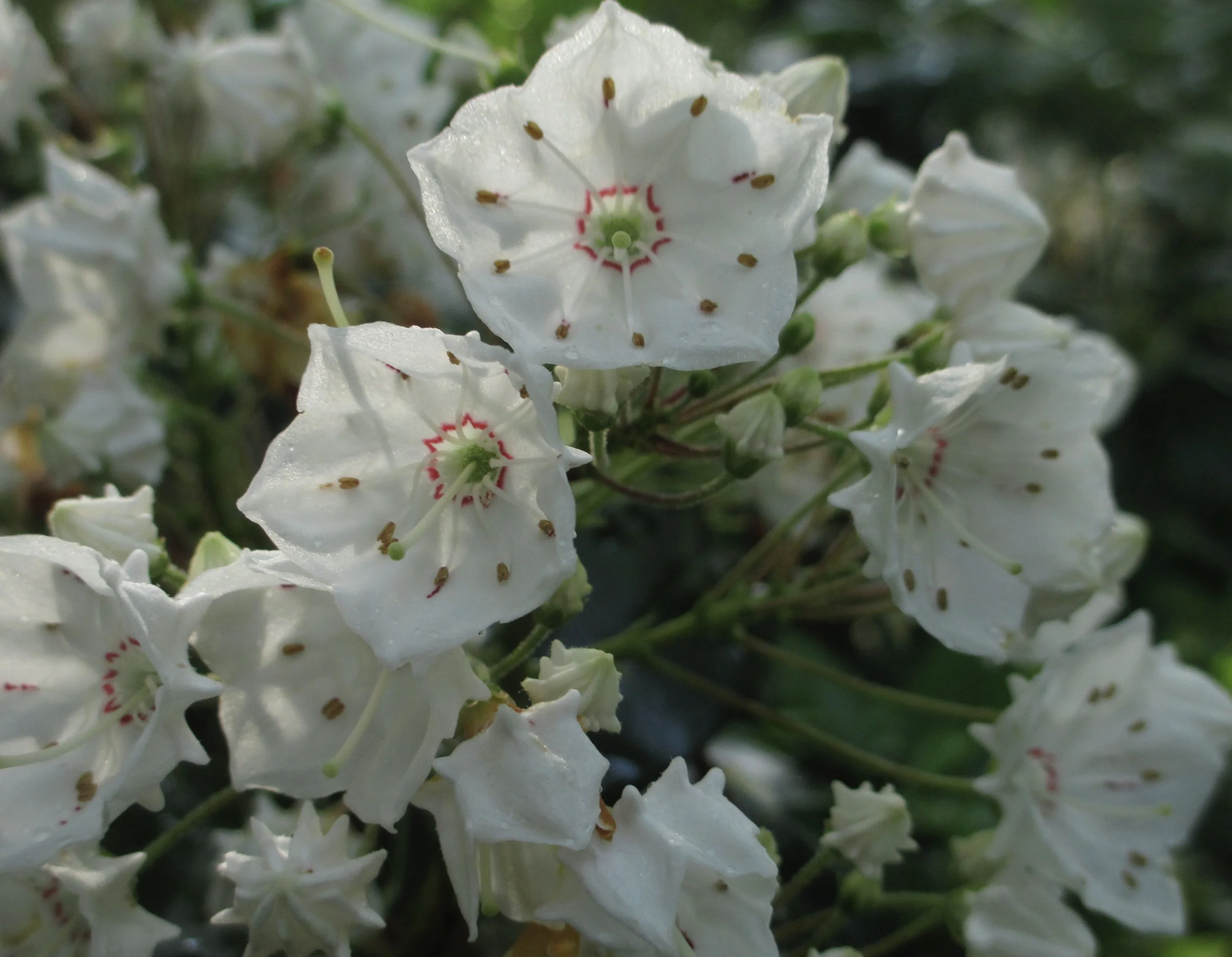
Kalmia latifolia 'Silver Dollar'
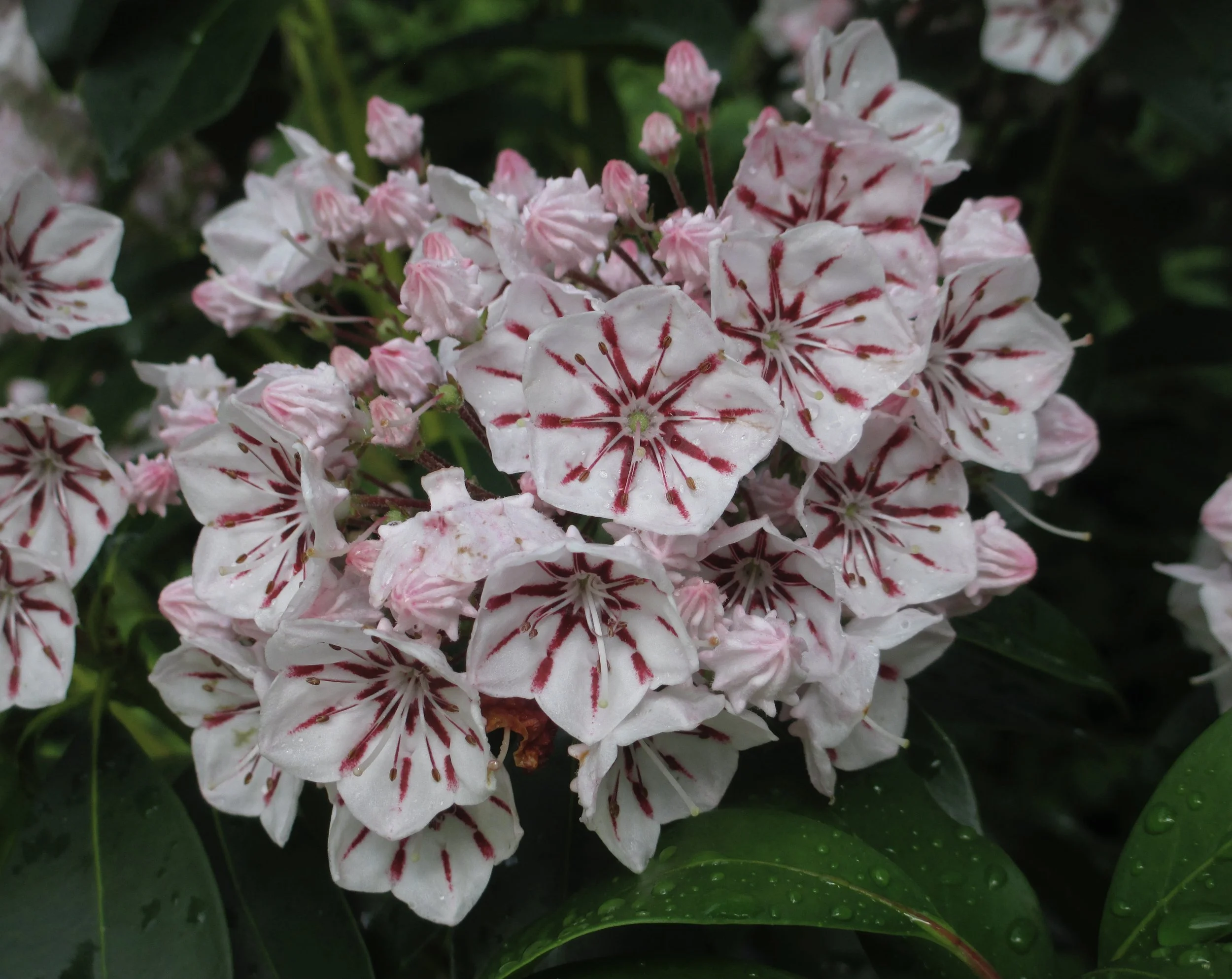
Kalmia latifolia 'Peppermint'